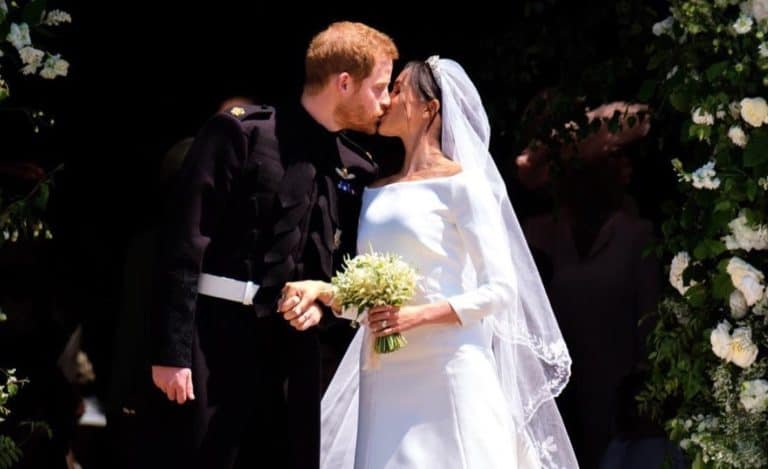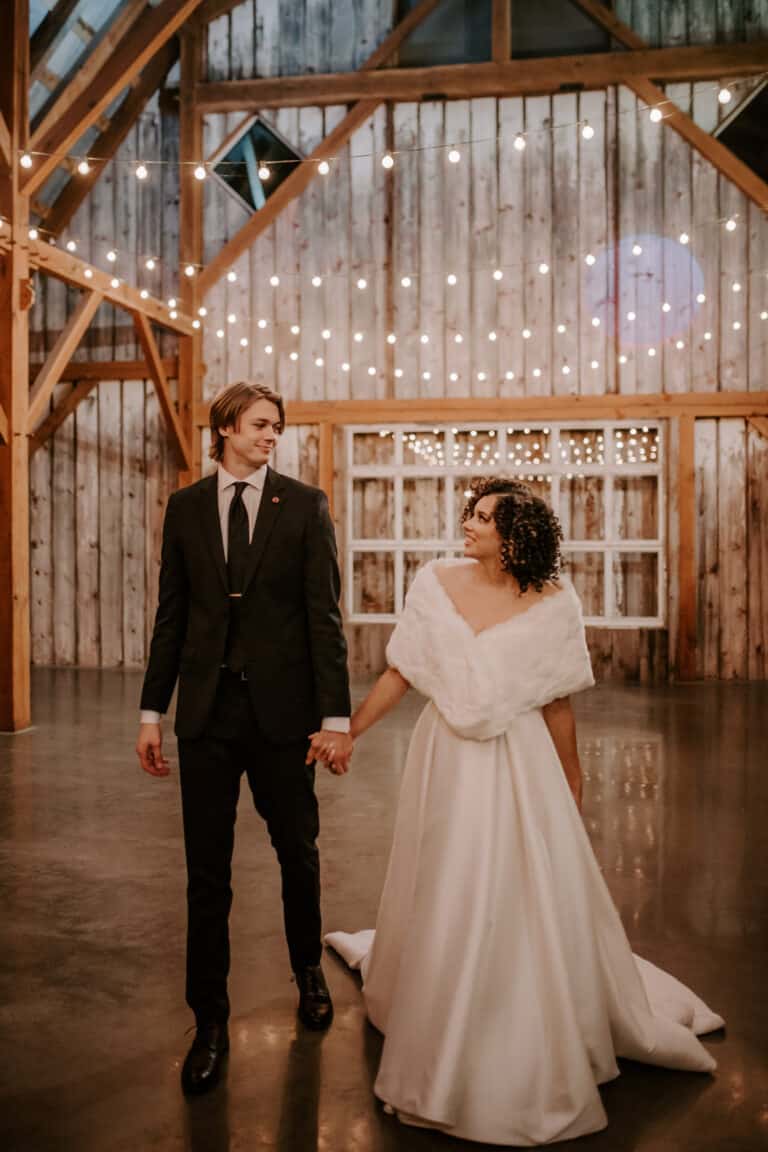What Does a Typical Wedding Planning Timeline Look Like?
Planning a wedding can be one of the most joyful yet challenging tasks you’ll undertake. Whether you’re aiming for a grand event or an intimate gathering, a well-structured timeline is essential to manage everything smoothly.
At Savvy Bridal, we know that planning a wedding can feel overwhelming. Below is a comprehensive 12-month wedding planning timeline that breaks down tasks into manageable steps, ensuring a stress-free journey toward your big day.
12+ Months Out
Lay the Foundation
The journey begins with envisioning your dream wedding. Use this time to define your priorities and establish the fundamentals.
- Set Your Budget: Establish a realistic budget and decide who’s contributing. If you are unsure of how to budget for the big day, many websites offer budgeting tools. For example, The Knot has a budget advisory section you could consider. These tools can help you understand the average costs for different services and how to divide up your budget between each of the things you will need to pay for.
- Choose a Date and Venue: Popular venues book up quickly, so secure yours early. While looking at venues, check what dates are available and how many guests each space will hold. Once you have landed on a venue and date, you can really get started on the rest of the planning process.
- Build Your Guest List: Estimate the number of guests to inform decisions about the venue and catering. If your venue has a strict guest limit, be sure to stick to it. This may mean trimming down the guest list to hit the specific head count maximum.
- Hire a Planner: If desired, hire a wedding planning professional to assist with logistics. While not everyone opts for a wedding planner, these pros can help ensure your day runs smoothly. Your planner can help pace the wedding day and ensure you and your guests are where you need to be for each part of the ceremony and reception.
- Research Vendors: Start looking for photographers, florists, caterers, and entertainment. Be sure you are looking at vendors within your budget to reduce stress later on.
- Choose a Theme: Decide on your wedding’s style and color palette to guide the planning process. You will need to know these things before you get too far with your florist, baker, photographer, and other vendors, who will all need to know colors and themes.
10 to 11 Months Out
Build Your Vendor Team
This phase focuses on assembling the professionals who will bring your vision to life.
- Book Vendors: Secure key vendors like photographers, videographers, and caterers.
- Plan Engagement Photos: Schedule an engagement photo session if desired.
- Dress Shopping Begins: Start trying on wedding dresses, allowing time for fittings. Dresses usually take about six months to ship, so you want to give plenty of time for subsequent fittings.
- Reserve Accommodations: Block hotel rooms at nearby hotels for out-of-town guests. You may want to get a block at one hotel or a couple to give everyone options.
Design Your Save-the-Dates: Choose and order cards to announce your wedding date. You should send these out at least six months before your wedding to give people adequate time to make plans.
Eight to Nine Months Out
Get into the Details
With the major decisions made, it’s time to focus on the details that make your wedding unique.
- Hire Additional Vendors: Book florists, entertainment, and other services. This may also be a good time to do a budget check-in to see if there are any services you need to cut or DIY to stay within budget.
- Bridal Party Attire: Choose outfits for your bridesmaids, groomsmen, and flower girls. This should still leave them plenty of time to arrive and go through the alterations process.
- Menu Tasting: Attend tastings with your caterer to finalize the menu.
- Finalize the Guest List: Trim the list and ensure accurate headcounts. This may be a challenge, but if you have too many guests, you could consider a child-free wedding or reducing the number of plus-ones you allow to help keep within the headcount.
- Plan Décor: Work with your planner or decorator to refine the overall aesthetic. This is also the time to start thinking about the things you may need to purchase and see if you have room to add them to your budget.
Six to Seven Months Out
Focus on Experiences
This stage is all about ensuring your guests have a memorable experience.
- Create the Wedding Registry: Choose items that fit your lifestyle. Try to add items at various price ranges to ensure every guest can find something they can afford.
- Plan the Honeymoon: Book travel and accommodations for your post-wedding getaway. If your honeymoon is abroad, make sure you have current passports. At this point, you still have plenty of time to apply for a new passport should you not have one or have an expired one.
- Order Invitations: Finalize and purchase wedding invitations.
- Coordinate Transportation: If necessary, book transportation for the wedding party and guests. Many couples choose buses to take people to and from key locations.
- Hair and Makeup Trial: Schedule trials to find the perfect look.
Four to Five Months Out
Fine-Tune the Details
This is the time to polish the plans and finalize smaller but essential aspects.
- Order Wedding Favors: Select thoughtful keepsakes for your guests.
- Write Vows: Begin drafting personal vows if you’re writing your own.
- Plan the Ceremony: Work with your officiant to outline the ceremony.
- Confirm Rentals: Reserve tables, chairs, linens, and other rentals.
- Plan Guest Activities: Arrange a rehearsal dinner, welcome party, or brunch.
Three Months Out
Lock It In
With the day approaching, finalize key details and ensure everything is on track.
- Send Invitations: Mail invitations and track RSVPs. There are many great RSVP tips and tricks other brides have used to make this process easier.
- Final Dress Fitting: Ensure your wedding dress fits perfectly. This is also the perfect time to finalize your shoes.
- Create a Timeline: Draft a wedding day schedule for vendors and participants.
- Order Cake: Finalize the design and flavors of your wedding cake.
Prepare a Playlist: Work with your DJ or band to choose music for the event. Focus on your must-haves as well as a list of songs you don’t want to be played at the reception.
Two Months Out
Tie Up Loose Ends
As the wedding nears, confirm all details and start delegating tasks.
- Confirm Vendor Arrangements: Verify all bookings, timings, and requirements. This may also be a good time to tie up any loose ends you have been holding off on.
- Create a Seating Chart: Use your RSVP list to assign tables. It is best to group people who know each other or have things in common together at tables. For example, it probably isn’t a great idea to sit Grandma at a table with a bunch of the groom’s friends from college.
- Prepare Wedding Party Gifts: Choose meaningful gifts for your bridal party. These little gifts don’t have to be expensive or extravagant, but they should come from the heart.
- Get Your Marriage License: Research requirements and apply early. Some states only allow you to pick up a license a few days before your wedding, but you will want to understand the process plenty early.
- Pack for Your Honeymoon: Start gathering items for your trip. Bear in mind the location and the weather at that time of year.
One Month Out
Get Ready for the Big Day
The final stretch is about preparation, relaxation, and enjoying the moment.
- Confirm Final Guest Count: Provide numbers to your caterer and venue. This may also mean reaching out to any guests who have failed to RSVP.
- Finalize Timeline: Share the schedule with vendors and your wedding party so everyone knows when they need to be where.
- Prepare Emergency Kit: Include essentials like sewing supplies, safety pins, and snacks.
- Rehearse: Conduct the rehearsal and enjoy the rehearsal dinner.
- Relax: Take time for self-care and savor the excitement.
Planning a wedding doesn’t have to be stressful when you have a clear timeline. By breaking tasks into manageable steps, you can focus on the joy of the process rather than the stress. Use this 12-month wedding planning timeline as your guide to create a day that’s as special and unique as your love story. Happy planning!







